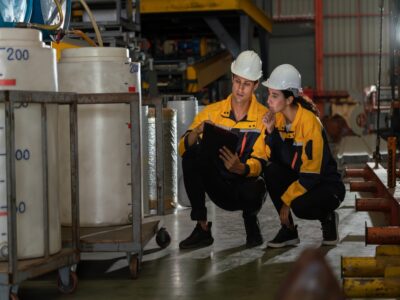
The manufacture of semiconductor and printed circuit boards involves the use of various hazardous chemicals and materials or simply electronic chemicals. Semiconductor chemicals encompass semiconductor substrates, semiconductor processing chemicals, and semiconductor packaging materials. Semiconductor processing chemicals include bulk and specialty gases, wet chemicals, photoresists, thin film metals, and CMP slurries. These chemicals range widely in volume usage but have a common thread of high purity requirements.
The classes and chemicals include:
Bulk gases
Dopants gases
Etchant gases
Chemical vapor deposition (CVD) chemicals
Wet chemicals
Electrostatic discharges (e.g., sparks, brush discharges) can also cause problems in the electronics sector where damage can be caused to sensitive electronic components. Control of static electricity requires special techniques over and above those used to prevent fire and explosion. Discharges from equipment, insulators, and even people can each cause damage to components, and identification of the sources of static charging as well as charge control techniques are needed.
We partner with our clients in the electronics industry to help them identify, assess, prevent, and control fire, explosion, and accidental loss of containment hazards in their operations.
Our services include expert consulting, laboratory testing, and training in the specialist fields of dust explosion & fire hazards, electrostatic hazards & processing problems, gas & vapor flammability hazards, Process Hazard Analysis, Process Safety Management, and incident investigation.

Get in touch
To learn more about our expertise and services in dust explosion prevention & mitigation, call us at +1 609 455 0001 or email us at [email protected] today.
We also offer tailored virtual and in-company process safety training programs on Dust Explosions, Static Electricity and HAC (Hazardous Area Classification) and more. Find further information here.







